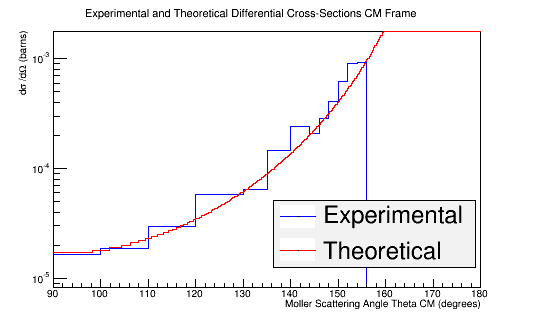Check Differential Cross-Section
It was shown earlier that the differential cross section scale is
For an Ammonia target:
If the beam had 4E8 incident electrons, the differential cross-section would be found with,
Since extra Phi angles have been produced obviously a larger number of incident electrons would be needed. Looking at the number Moller events are created for 1E6, 1E7, and 4E8 incident electrons, we can estimate the number of incident electrons needed for the number of extra Phi angles produced.
|+ Moller Events per Incident Electrons
|-
! # of Incident Electrons ! # of Moller Events ! # of E>500MeV
|-
| 1e6 | 38343 | 134
|-
| 1e7 | 383633 | 1490
|-
| 4e8 | 12444898 | 48548|}
This shows a trait of providing around 100 Moller electrons of Energy greater that 500 MeV for about 1 million incident electrons of Energy 11 GeV. Since the boosting of the number of Phi angles leaves around 4431573 Moller electrons with Energy greater than 500 MeV, this would imply around 4e10 incident electrons of Energy 11 GeV.
Using the same expression, but this time for 4e10 incident electrons,
Rebining the histogram to account for the unequal weighting of the bins outlined in the table above
TH1F *Combo=new TH1F("TheoryExperiment","Theoretical and Experimental Differential Cross-Section CM Frame",360,90,180);
Combo->Add(MolThetaCM,8.87e-10);
Combo->Draw();
Double_t Bins[16]={90,100,110,120,130,135,140,142,144,146,148,150,152,154,156,180};
hnew=Combo->Rebin(15,"hnew",Bins);
hnew->Draw();
Theory->Draw("same");
